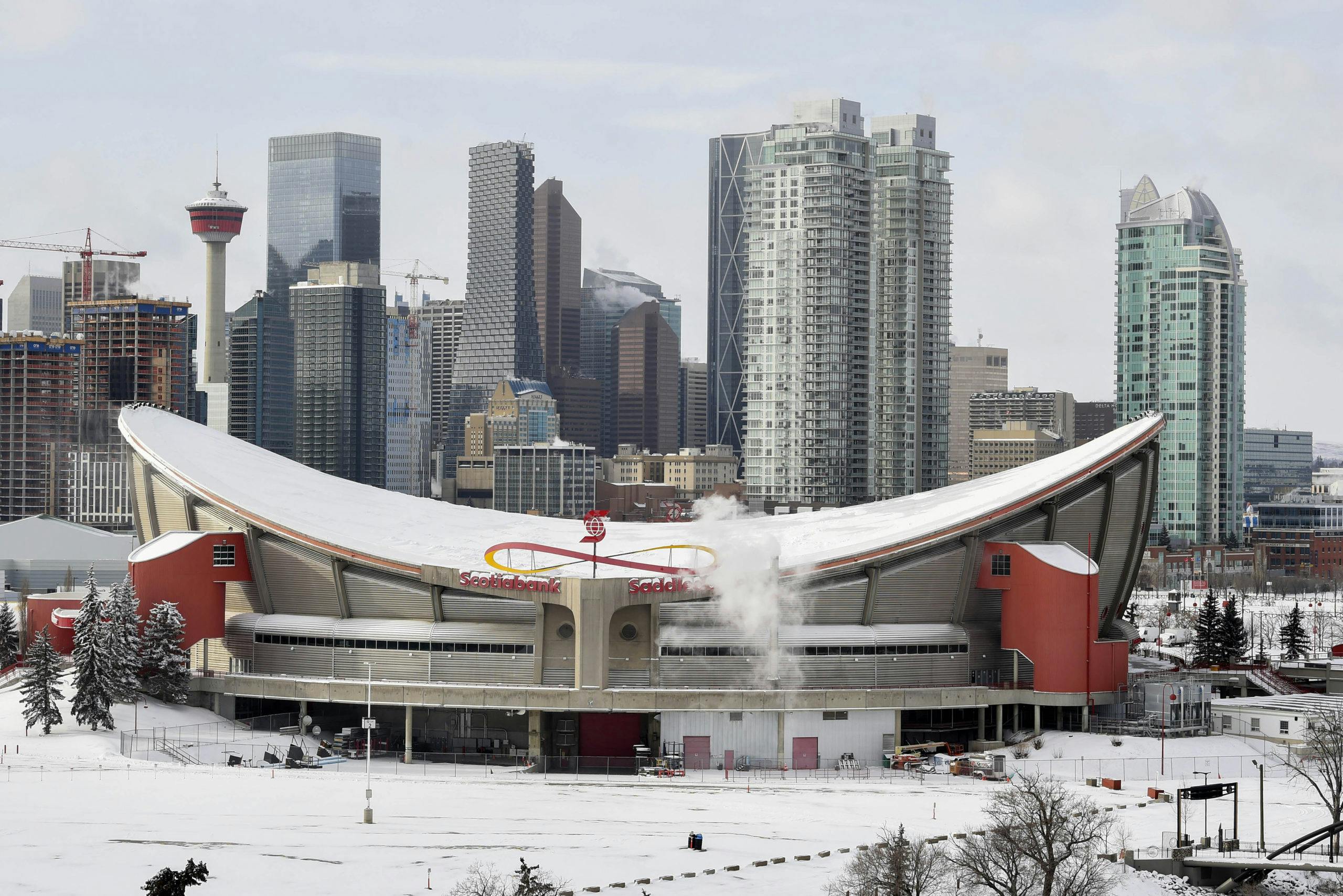Nation Sites
The Nation Network
FlamesNation has no direct affiliation to the Calgary Flames, Calgary Sports and Entertainment, NHL, or NHLPA
CBA School: Article 49 – Player Compensation Cost Redistribution System

Photo credit: Candice Ward-USA TODAY Sports
When is revenue sharing not actually revenue sharing? When you don’t call it that. Next up in our CBA drill-down is the NHL’s revenue sharing plan, for lack of a better term.
Let’s take a gander into Article 49: Player Compensation Cost Redistribution System.
What is this?
The purpose of the system is explained in a weirdly long preamble – this is one of only a handful of CBA articles with a preamble – explaining that they want to basically make sure all league clubs can meet their player compensation obligations:
The Player Compensation Cost Redistribution System acknowledges the reality that the Upper Limit of the Payroll Range prevents certain high-revenue Clubs from spending as much of their revenues toward Player Compensation (i.e., Player Salaries, Bonuses and Benefits) as they might otherwise be capable of spending. In addition, there may be lower-revenue Clubs that may have challenges in spending much more than the Lower Limit of the Payroll Range…The Player Compensation Cost Redistribution System described herein, therefore, is designed to cause certain high-revenue Clubs to contribute even more of their revenues toward the payment of Player Compensation – albeit indirectly – by redistributing a certain portion of the revenues of such Clubs to the lower-grossing Clubs so that such lower-grossing Clubs may be able to, and elect to, spend more on Player Compensation.
So it’s not explicitly revenue sharing, but it’s player-related cost-sharing based predominantly on revenue-based considerations.
How does it work?
Broadly-speaking, here’s the process. At the end of each season, the accountants prep the annual Hockey Related Revenues (HRR) report. Based on that report, the NHL will determine each team’s preseason and regular season gross revenues, arena costs, gross revenues less arena costs, and based on the gross revenues they determine the Available Team Player Compensation – it’s half of their gross revenues, basically. They also create their targets for Minimum Team Player Compensation (the cap floor times 70%, plus a benefits amount) and Targeted Team Player Compensation (the cap ceiling, plus a benefits amount).
The league makes a list of teams from 1 to 31, ranked by gross preseason and regular season revenues. Factoring in arena costs, the 10 teams in gross revenues are “contributors” to the redistribution system.
Who receives funds?
Teams receive funds based on the following system:
- For clubs whose Available Compensation is greater than the Minimum Compensation but less than the Targeted Compensation, they’ll receive the difference between the Targeted and Available. (e.g., if Available Compensation was $35 million, Minimum was $30.1 million and Targeted was $48.3 million, they would receive $13.3 million)
- For clubs whose Available Compensation is less than both the Minimum and Targeted Compensation, they’ll get the Maximum Base Distribution. The Maximum Base Distribution is the difference between the Minimum and Targeted Compensation for any given year. (e.g., if Available Compensation was $25 million, Minimum was $30.1 million and Targeted was $48.3 million, they would receive $18.2 million)
However, a team cannot receive a payout from the system that when added to their gross revenues would cause them to hit the midpoint of the payroll range. Also, teams with per-game gate receipts of less than 75% of the league average are also eligible for support from Industry Growth Fund, but need to submit a three year plan for improving financial performance.
Who gives funds?
Once they’ve tallied up the necessary distributions to teams, then it’s onto figuring out how to meet those commitments. The sources of funds are:
- The 10 teams with the highest gross preseason and regular season revenues (less arena costs).
- The playoff gate receipts of participating teams
- Centrally generated league revenues (if necessary)
There’s a complex formula for the 10 contributing teams, but it’s based upon the difference in revenue between each of the 10 highest-grossing teams and the 11th team. (As in: they’d never be required to contribute an amount that would put them below the 11th team in gross revenue.)
If they still need money to meet their commitments, 35% of playoff gate receipts are put into a pot. This pot can fund up to 50% of the commitments for redistribution. (Any amount over 50% is returned back to the playoff teams.)
And if they still need funds to meet their commitments, they dip into the NHL’s central revenue pot.
Industry growth fund
Speaking of the NHL’s central revenue, they’re required to contribute an unspecified amount to establish an Industry Growth Fund. Here’s the point of it:
The Industry Growth Fund is intended to provide access to funds primarily to those lower-grossing Clubs that may need supplemental support to allow them to make longterm
improvements in their revenue generating potential and operational efficiency given their
particular circumstances. Further, the Industry Growth Fund will be utilized for other Clubs
(including prospective Club purchasers) and/or League-wide projects, including but not limited to marketing and promotional initiatives, proposed by a member of the Revenue Sharing Oversight Committee.
If a team is doing poorly at the gate because they’re not good at running a team, the Growth Fund is intended to help them optimize and get better at it. The notion is that the larger system is intended to make up for structural issues like variations in market size or exchange rate considerations.
Breaking News
- Flames Game Day 36: A visit from the Golden Knights (8pm MT, SN/CBC/City)
- The Flames have made some progress in 2025-26, despite some tough results
- Recap: No Christmas miracle for the Wranglers in overtime against Matthew Phillips
- What version of Jonathan Huberdeau are the Flames seeing this season?
- Wranglers series preview: Winter Wranglerfest weekend to tee up Christmas break
